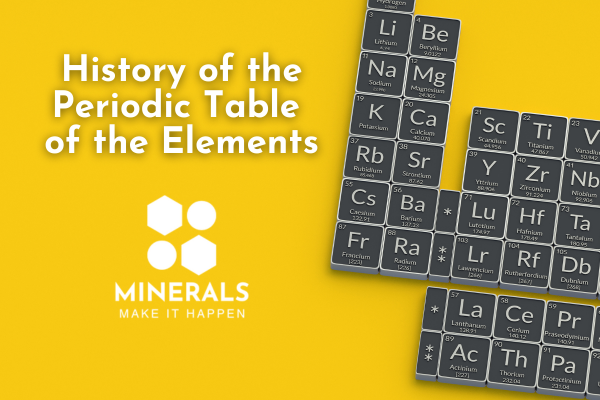February 7, 2025
February 7, 2025

The periodic table of elements is one of the most significant achievements in science, organizing all known elements based on their properties and atomic structure. This foundational tool allows scientists, engineers, and industry professionals to predict the behavior of elements and understand their applications—especially when it comes to valuable minerals that shape modern life. From the air we breathe to the smartphones we use, the elements in the periodic table shape our world.
The Birth of the Periodic Table
Before the periodic table, elements were studied in isolation, with no clear pattern linking their properties. The idea of organizing elements dates back centuries, with early scientists attempting to classify substances based on their properties. In 1869, Russian chemist Dmitri Mendeleev developed the first widely recognized periodic table by arranging elements in order of atomic weight, noticing that similar properties recurred at regular intervals. His foresight allowed him to leave gaps for undiscovered elements, many of which were later found and fit perfectly into his framework. Over time, refinements—such as Henry Moseley’s work in 1913, which reordered elements by atomic number—perfected the table we use today.
The modern periodic table is organized into groups and periods, categorizing elements based on their chemical behaviors. It now includes 118 known elements, many of which are crucial to modern technology and industry.
Essential Minerals in the Periodic Table
Many elements on the periodic table are found in minerals that serve critical functions in our daily lives. Let’s explore a few that highlight the importance of minerals in everything from technology to infrastructure:
The Periodic Table: A Living Document
Even today, the periodic table continues to evolve. Scientists explore new superheavy elements and refine our understanding of existing ones. Minerals, and the elements they contain, remain indispensable to technological progress, infrastructure, and daily conveniences.
Next time you use your smartphone, drive a car, or even turn on a light, remember that the periodic table is more than a scientific chart—it’s a roadmap to the minerals that make modern life possible.

March 17, 2025

February 7, 2025